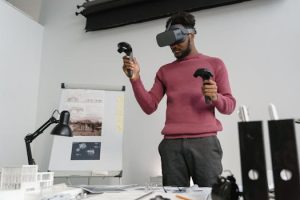Democratizing Learning Opportunities for Underserved Populations
The education system has long been a source of inequality, with underserved populations often facing numerous barriers to accessing quality learning opportunities. This issue has been further exacerbated by the global pandemic, which has highlighted the digital divide and the lack of access to remote learning for many marginalized communities. However, there is hope on the horizon, as efforts are being made to democratize learning opportunities for underserved populations. In this article, we will explore the concept of democratizing education and the various initiatives that are making a significant impact in providing equal access to learning for all.
What is Democratizing Learning?
Democratizing learning refers to the efforts and initiatives aimed at breaking down the barriers that prevent individuals from marginalized and underserved populations from accessing education. It is centered on the belief that everyone should have the opportunity to learn and acquire the knowledge and skills necessary for personal and professional growth. Democratizing learning involves addressing complex issues, such as racial and socioeconomic disparities, to ensure that all individuals have equal access to education.
The Digital Divide and Remote Learning
The COVID-19 pandemic has exposed the deep digital divide that exists between individuals from different socioeconomic backgrounds. While many schools and universities quickly transitioned to remote learning, not all students had the necessary equipment, internet access, or a conducive learning environment to participate fully. This has resulted in a significant disadvantage for students from underserved populations, as they are more likely to come from low-income families that can’t afford the technology needed for remote learning.
However, there have been efforts to bridge this digital divide and provide equal learning opportunities for all students. One initiative is the provision of free or discounted internet services and tablets or laptops to students in need. This has enabled them to access online classes and continue their education, ensuring they do not fall behind their more privileged peers.
Addressing Cultural and Language Barriers
Cultural and language barriers are another significant obstacle for underserved populations when it comes to accessing education. Many immigrants and their children face language barriers, making it difficult for them to excel academically. There are also cultural differences that can make it more challenging for students to feel included and engaged in the learning process.
To address these issues, schools and universities are implementing programs and initiatives that focus on cultural sensitivity and providing support for students from diverse backgrounds. This helps create a more inclusive learning environment where all students feel valued and nurtured, regardless of their cultural background or language proficiency.
The Role of Technology in Democratizing Learning
Technology has been a game-changer in democratizing learning opportunities for underserved populations. With the rise of online learning platforms and tools, students can access educational resources and materials from anywhere, at any time. This has been particularly helpful for students from low-income families who may not have the means to travel to a physical location for learning.
Additionally, technology has also made it possible for students to receive individualized instruction through adaptive learning programs and personalized learning platforms. This ensures that every student’s unique needs and strengths are taken into account, leading to better learning outcomes and increasing their chances of success.
Conclusion
Democratizing learning opportunities for underserved populations is a complex and ongoing process that requires a collective effort from all stakeholders. However, initiatives such as bridging the digital divide, addressing cultural and language barriers, and leveraging technology are making a significant impact in providing equal access to education for all. As we continue to work towards a more equitable education system, it is crucial to keep the needs of underserved populations at the forefront and strive towards a future where education is truly accessible to all, regardless of race, gender, or socio-economic status.











